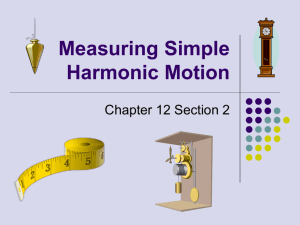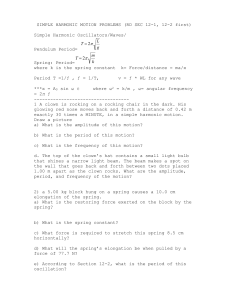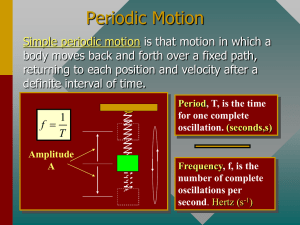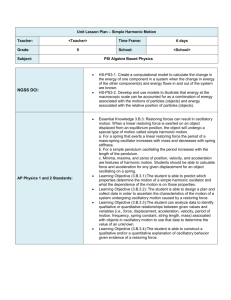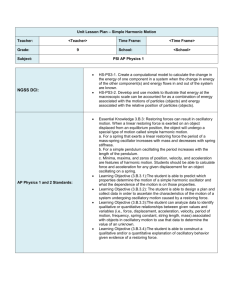SHM Notes
advertisement
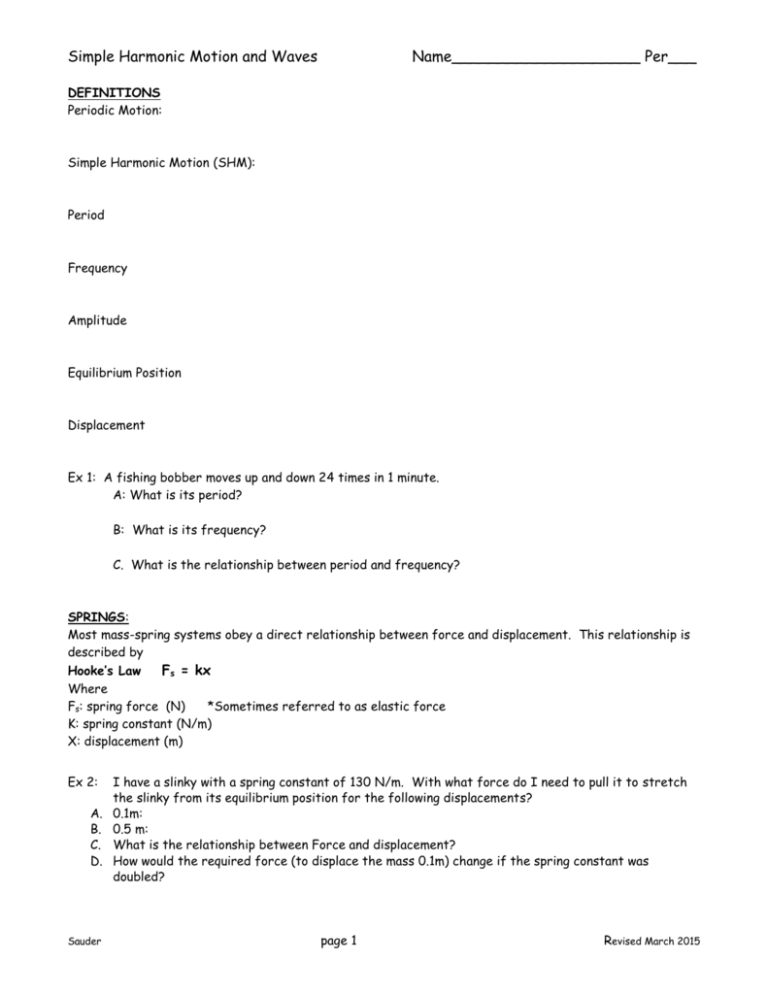
Simple Harmonic Motion and Waves Name____________________ Per___ DEFINITIONS Periodic Motion: Simple Harmonic Motion (SHM): Period Frequency Amplitude Equilibrium Position Displacement Ex 1: A fishing bobber moves up and down 24 times in 1 minute. A: What is its period? B: What is its frequency? C. What is the relationship between period and frequency? SPRINGS: Most mass-spring systems obey a direct relationship between force and displacement. This relationship is described by Hooke’s Law Fs = kx Where Fs: spring force (N) *Sometimes referred to as elastic force K: spring constant (N/m) X: displacement (m) Ex 2: A. B. C. D. Sauder I have a slinky with a spring constant of 130 N/m. With what force do I need to pull it to stretch the slinky from its equilibrium position for the following displacements? 0.1m: 0.5 m: What is the relationship between Force and displacement? How would the required force (to displace the mass 0.1m) change if the spring constant was doubled? page 1 Revised March 2015 Simple Harmonic Motion and Waves Name____________________ Per___ SPRINGS & SHM: Ts 2 m k Where Ts: Period of a spring force (sec) K: spring constant (N/m) m: mass (kg) What is the relationship between mass and period of a spring? What is the relationship between spring strength (Think spring constant) and period of a spring? Ex 3: What is the mass of my car if the shocks have a spring constant of 6000 N/m and it oscillates with a period of 2 seconds when I hit a bump in the road? A.The ____________________ is the time of one complete vibration. B.The ____________________ of vibratory motion is the number of vibrations per second. C.The frequency is the ____________________ of the period. T sec onds cycles f cycles sec ond Sauder An object suspended so that it can swing back and forth about an axis is called a ___________________. An ideal pendulum is one where all mass is considered to be concentrated in the __________. page 2 Revised March 2015 Simple Harmonic Motion and Waves Tp 2 Name____________________ Per___ l g Where Tp: Period of a pendulum (sec) l: length of pendulum (m) g: acceleration due to gravity (m/s2) Refer to the pendulum formula and answer the following statements: How does mass affect period? What is the relationship between length and period? What is the relationship between acceleration of gravity and period? Ex 4: What is the period of a pendulum that is 0.35 m long at sea level? Ex 5: The frequency of a moving pendulum measures 23 oscillations per 4.3 seconds. Determine the length of such pendulum. Ex 6: How do the periods of two pendulums compare if one has a measure of 25 cm and the other has a measure of 100 cm? References: Trinklein, F. E. Modern Physics (TE). Austin: Holt, Rinehart and Winston, 1992. Section 6.2 of Zitzewitz, P. W. Glencoe Physics: Principles and Problems. New York: Glencoe/McGraw-Hill, 2002. Sauder page 3 Revised March 2015




